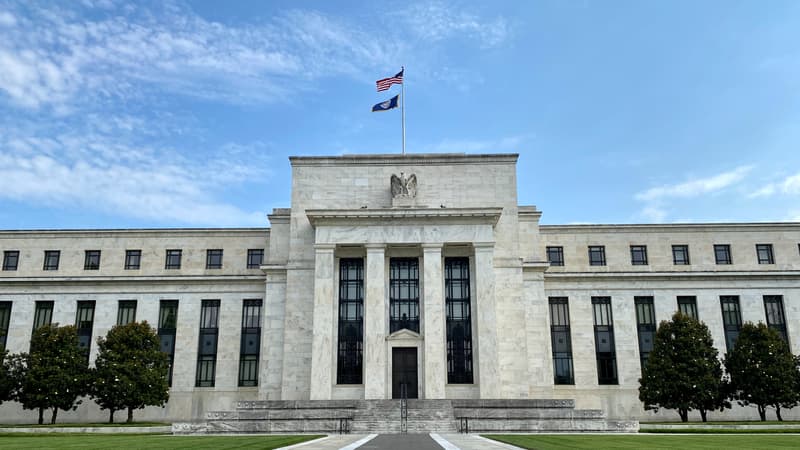Despite the lack of publication of economic indicators due to the budget paralysis that has been going on since the beginning of the month in the United States, the US Federal Reserve (Fed) is expected to lower its rates on Wednesday for the second time this year, while inflation remains persistent.
The “shutdown”, which began in early October and which seems far from finding an end, has blocked the publication of most of the data, with unemployment and the PCE inflation index – the one preferred by the Federal Reserve for its monetary policy – in the lead.
On Friday, the US Department of Labor released the CPI inflation index, a must as it is used to index Americans’ retirement pensions. It showed that in September, consumer prices continued to increase by 3% year-on-year.
Without reliable data, the Federal Reserve finds it difficult to determine the real state of the US economy, particularly in the characteristics linked to its dual mandate: full employment and long-term inflation limited to 2% annually.
Indeed, the labor market in the United States has shown worrying signs of slowdown, especially in terms of hiring, and several analysts have estimated that only the drastic drop in migratory flows made it possible to avoid an increase in unemployment, up to 4.3% in August, according to the latest available data.
In fact, markets widely anticipate a further 0.25 point reduction in the Federal Reserve’s key rates, which would then stabilize in a range between 3.75% and 4%, according to the CME’s tracking tool, FedWatch.
The Monetary Policy Committee (FOMC) of the Federal Reserve “considers that its policy remains restrictive and is trying to find the balance between still high inflation and a weak labor market,” underlines Joseph Gagnon, researcher at the PIIE institute.
According to him, “the argument is that the persistence of inflation is only temporary”, due to the effect of customs duties, which is transitory and prices only increase once, “while the weakness of the labor market could be persistent.”
Multiple challenges for the Federal Reserve
But it is difficult to foresee more for the future, while the world’s largest economy will blindly advance its own performance if budget paralysis persists.
But unemployment and inflation cannot be the only difficulties that the Federal Reserve risks facing, emphasizes KPMG chief economist Diane Swonk, interviewed by AFP.
Since the 2008 financial crisis, the Federal Reserve’s balance sheet has increased from about $900 billion to nearly $6.6 trillion as of early October, with a peak near $9 trillion in April 2022.
Theoretically, in the event of a risk of a slowdown in the economy, a central bank can, in addition to lowering its rates, launch monetary easing, the so-called quantitative easing, which consists, in particular, of purchasing assets in the markets to inject liquidity.
After its relaxation in 2008 and the Covid-19 pandemic, the US central bank began a phase of monetary tightening, which this time consists of withdrawing liquidity by putting part of the acquired assets back on the market.
However, during an event in mid-October, Jerome Powell suggested that this adjustment could be stopped.
Diane Swonk even sees the Fed “easing more sharply” next year “with rates potentially falling below what it considers the neutral rate.”
The neutral rate is one that, according to the central bank, has no effect on the economy, neither supports it nor slows it down.
Source: BFM TV


